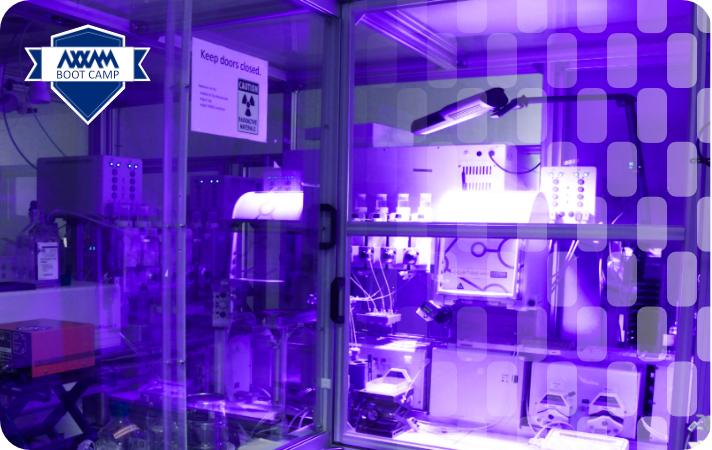Webinar

Radiometric assays in drug discovery
Webinar Summary:
Filter-based radiometric assays have been known since 1964, initially as a possibility to analyze protein RNA interactions. In spite of a separation step, they are suitable for high-throughput screening. They are still of interest, as, for example, they can be used for bigger sample volumes and potentially interferent components are removed by filtration.
Bead-based scintillation proximity assays have been used since 1987. As these assays do not require a separation step and the beads are available with various surface chemistries, this assay principle has rendered several target classes amenable to high-throughput screening. For some of these target classes non-radiometric alternative assays are available in the meantime. But even for these, the scintillation proximity assay often displays advantages, for example, the labeling of ligands and substrates with 3H does not affect biochemical parameters, in contrast to bulky fluorescent labels. Furthermore, scintillation proximity assays are often less prone to compound interferences, and thus, ideal as an orthogonal assay.
Axxam offers assay development, high-throughput screening and hit-to-lead support both for radiometric and non-radiometric assays. We can evaluate and recommend the optimal assay for each target proposed.
In addition, we design and implement radiometric low-throughput assays for analysis of parameters that cannot be measured with non-radioactive approaches. Examples are a cellular in vitro patient model for lysosomal storage disease and a cellular assay for influence of compounds on fatty acid oxidation.
Indeed, we believe that radiometric assays remain a powerful tool in drug discovery.
Keywords:
Radiometric assay; Assay development; High-throughput screening; Hit-to-lead support; Filter-based assay; Scintillation proximity assay; 3H ligand displacement assay; in vitro patient model
Speakers:
-
Gabriele Sorg – Head of Science and Safety, Axxam GmbH
- Julian Thoma from RC Tritec AG will be our guest panelist during this webinar. He will briefly introduce RC Tritec’s experience in Tritium labeling for radiometric assays and answer any questions at the end of the session.

After further experience as a project leader of clinical development projects at Biotest AG, Gabriele came to work for HDC GmbH, in 2015, now Axxam GmbH, where she was Head of Biology and Screening and now Head of Science and Safety. During her career, she has accumulated 28 years of experience with radiometric assays, 22 years of experience in high-throughput screening and 15 years of experience in project management.
